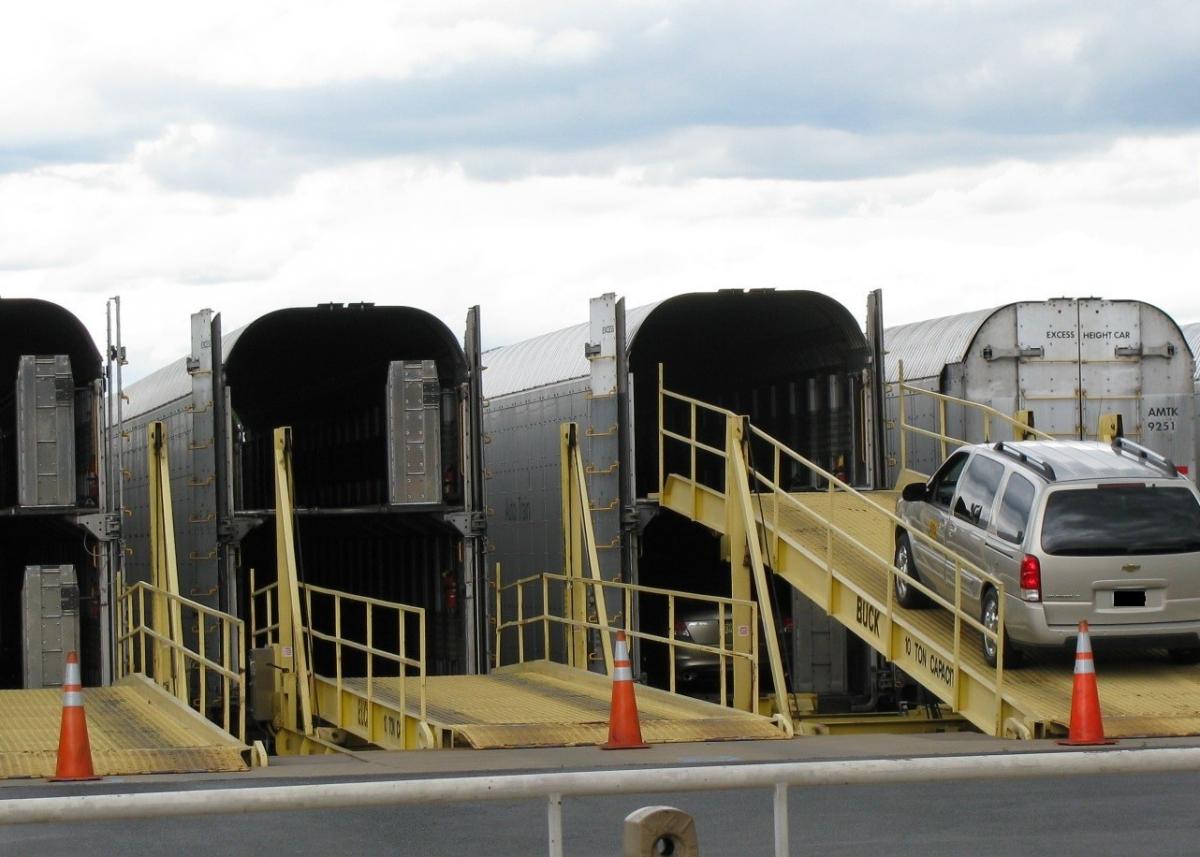Its Time Came 50 Years Ago

We were going north on the Auto Train last year. We chanced to sit at dinner with a middle-aged couple, and we chatted about Auto Train. I told them it was the only long-distance Amtrak train that made money. The man across from us said, “No, it doesn’t.” I told him, with my usual authority, that over many years the Auto Train either made money or broke even.
“This trip is losing $21,000,” he said. A bit annoyed at being challenged on a topic that I am the world’s leading authority, I asked him how he knew that.
“I’m the accountant,” he said.
Well, that will shut you up in a hurry. Having done some research on the matter, it appears true that Auto Train is losing money, although in the past it did not. But there is also a question of how overhead costs are allocated. But any way you do the numbers, the losses don’t compare with the losses incurred by regular long-distance trains. Trains lose money on people; they make money on freight, including cars. Auto Train can make money. I should know. I was a stockholder when the service was launched as a private company in the 1970s. It made well over $1million one year, before it got in trouble with a second train serving the Midwest. More on that later.
Since that encounter with the accountant, we have taken another trip on Auto Train, just last month, which may have set a world record for using it. We first rode it in the early 1970s, and have been on it almost every year since. Usually we take it only one way, but several times we took it up and back over the Christmas holidays. We are not alone. Auto Train patronage has remained strong ever since the government took over from the original private company in the early 1980s. It tends to reflect the ups and downs of the general Amtrak ridership, but it has remained fairly constant over recent years.
Obviously, our family is a fan, so big a fan that I have long wondered why such a sensible idea has not caught on around the country. Having recently completed a two-week train trip halfway around the country, I wonder stronger than ever. It seems that most, if not all, of Amtrak’s long-distance routes could support some form of this service. The fact is that the original Auto-Train Corporation considered the combination of an auto train with regular service in the 1970s. It was planned for the ill-fated train to the Midwest.
It was a good idea but badly executed. The train began service between its present southern terminus in Sanford, Florida and Louisville, Kentucky. The locomotives were too heavy for the tracks it used, which were not up to the standard of the east coast railroads. Several derailments led to legal and insurance costs, which forced the company out of business in 1981. Amtrak took over at that point.
Still, given the number of tourists and snowbirds who visit Florida from Chicago and other major cities in the Midwest, the train could have eventually been a success had it been better planned and executed.
Considering the volume of traffic on roads paralleling other Amtrak routes, such as California’s Coast Starlight from San Diego to Seattle, one has to think that an auto train combined with the present Amtrak service would make sense, especially if some of the minor station stops eliminated. Those stops would slow the service, but train riders are not in a hurry. It need not be a daily service, at least not until traffic warrants. Auto Train users generally plan well in advance. Amtrak already has a train that runs three times a week—the Cardinal loops from New York to Chicago by way of Washington and Cincinnati. One has to think it would greatly improve Amtrak’s bottom line, and help keep the future of rail travel from perpetual uncertainty.
From a traveler’s view, the Auto Train makes sense. Our recent trip north cost $940 for the overnight ride. We go first class, with a bedroom for comfort and privacy. A coach seat is much cheaper. Our fare also included two meals on the train. We returned by car because we detour down the scenic Shenandoah Valley and stop to see friends in North Carolina. Had we pushed straight through with 10-hour drives, we would have had one night’s hotel expense.
We actually stopped for two nights, and with fuel costs and meals, our expenses were $650. But we also had our car for 10 days in the north. Had we rented one as big as our Toyota Highlander, our costs would have exceeded the train. This does not include the wear on the vehicle for 1,000 miles of driving. And those miles get more nerve-wracking every year as the interstates grow more crowded, and delays for accidents and road construction get worse.
And there is no comparison between sipping a glass of wine on a train, looking out at the poor souls crawling along in a heavy rain, contrasted with being two days out in those elements and with reckless drivers weaving from lane to lane and blasting by you, even if you are doing 75 miles per hour.
We should note that from time to time Amtrak planners consider the auto train concept for other routes. They should stop considering and get this train moving. As this country becomes more crowded and its population more mobile, a national expansion is an idea whose time has come. In fact, it came almost 50 years ago.
Image via
